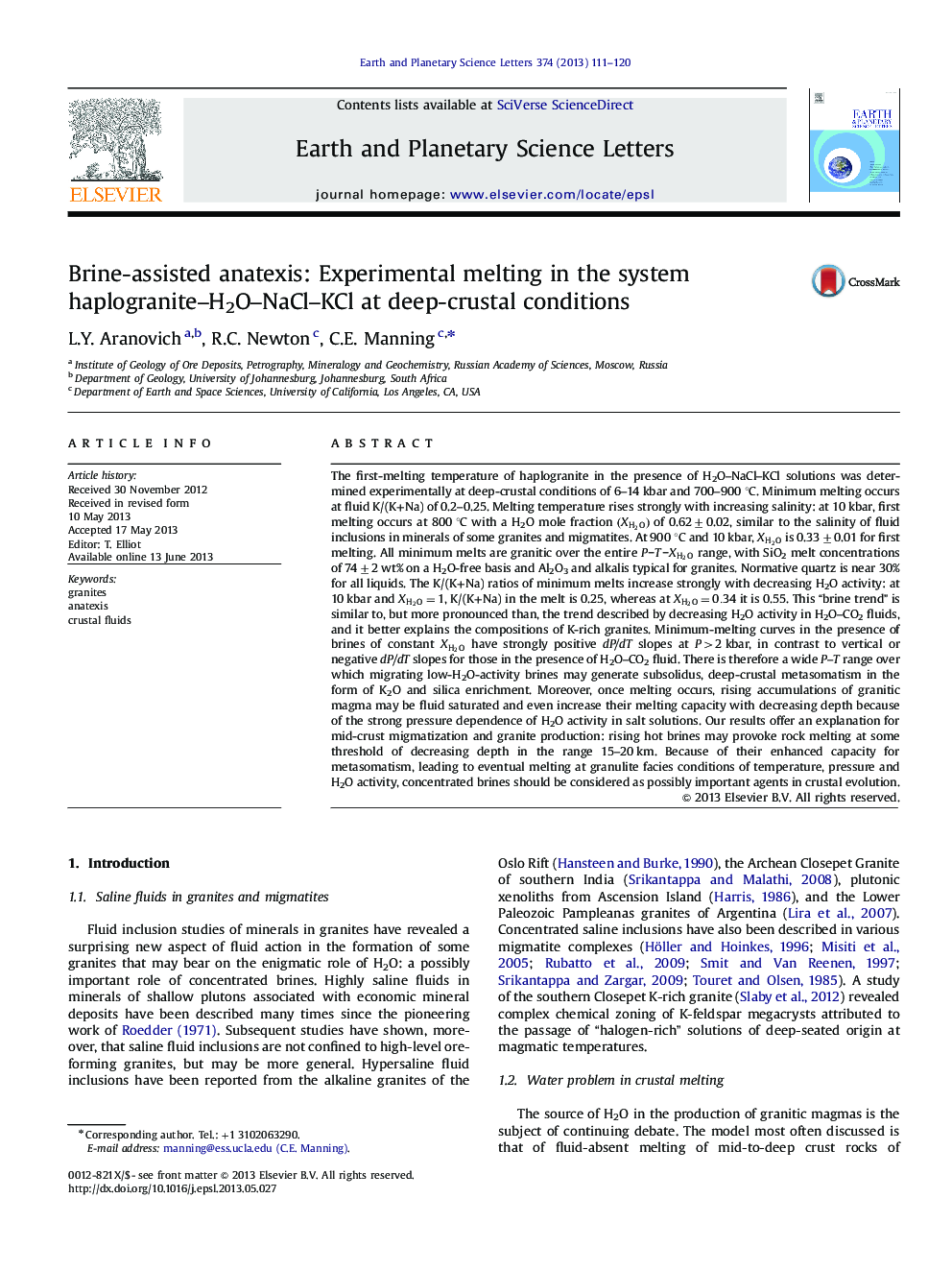| کد مقاله | کد نشریه | سال انتشار | مقاله انگلیسی | نسخه تمام متن |
|---|---|---|---|---|
| 6430139 | 1634781 | 2013 | 10 صفحه PDF | دانلود رایگان |

- Granite melting in H2O-salt fluids differs from that in H2O-CO2 fluids.
- Minimum melting temperature is higher at a given pressure and H2O mole fraction.
- Increasing salt content drives melts to higher SiO2 and K2O.
- This “brine trend” explains the compositions of K-rich, A-type granitoids.
- Positive dP/dT of liquid allows increased melting capacity during buoyant rise.
The first-melting temperature of haplogranite in the presence of H2O-NaCl-KCl solutions was determined experimentally at deep-crustal conditions of 6-14 kbar and 700-900 °C. Minimum melting occurs at fluid K/(K+Na) of 0.2-0.25. Melting temperature rises strongly with increasing salinity: at 10 kbar, first melting occurs at 800 °C with a H2O mole fraction (XH2O) of 0.62±0.02, similar to the salinity of fluid inclusions in minerals of some granites and migmatites. At 900 °C and 10 kbar, XH2O is 0.33±0.01 for first melting. All minimum melts are granitic over the entire PâTâXH2O range, with SiO2 melt concentrations of 74±2 wt% on a H2O-free basis and Al2O3 and alkalis typical for granites. Normative quartz is near 30% for all liquids. The K/(K+Na) ratios of minimum melts increase strongly with decreasing H2O activity: at 10 kbar and XH2O=1, K/(K+Na) in the melt is 0.25, whereas at XH2O=0.34 it is 0.55. This “brine trend” is similar to, but more pronounced than, the trend described by decreasing H2O activity in H2O-CO2 fluids, and it better explains the compositions of K-rich granites. Minimum-melting curves in the presence of brines of constant XH2O have strongly positive dP/dT slopes at P>2 kbar, in contrast to vertical or negative dP/dT slopes for those in the presence of H2O-CO2 fluid. There is therefore a wide P-T range over which migrating low-H2O-activity brines may generate subsolidus, deep-crustal metasomatism in the form of K2O and silica enrichment. Moreover, once melting occurs, rising accumulations of granitic magma may be fluid saturated and even increase their melting capacity with decreasing depth because of the strong pressure dependence of H2O activity in salt solutions. Our results offer an explanation for mid-crust migmatization and granite production: rising hot brines may provoke rock melting at some threshold of decreasing depth in the range 15-20 km. Because of their enhanced capacity for metasomatism, leading to eventual melting at granulite facies conditions of temperature, pressure and H2O activity, concentrated brines should be considered as possibly important agents in crustal evolution.
Journal: Earth and Planetary Science Letters - Volume 374, 15 July 2013, Pages 111-120